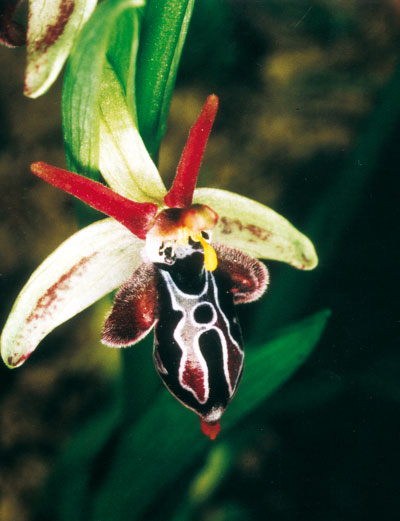

|
Hi Friends, Summer is into full swing and the weather can't be beat in the NE. It is very hot as I am writing this newsletter to you but I enjoy it. If you receive this letter and you are in the Dallas Tx area you have our hopes and prayers that you will be safe from the flood waters there. Elise, my older daughter is in South Africa and going to Zambia to get more experience in international human rights and policy writing. She will be spending the next two weeks working at an orphanage with disabled kids teaching them sports with human rights woven in. And hopefully getting them involved with non disabled kids. We all wish her good luck and enjoy the experience. Adam, my son, will be starting a new job next week. He will be working with a data mining firm from VA. After working in his last job for 7 years this will be a good change for him. Good luck Adam. This month I wanted to highlight some info on tips for growing orchids in the summer heat. You will need to be on alert this summer. Read more. I hope that your summer will be exciting and the children enjoy it with you. For up to date information about orchids and more look in on our blog. We add to it 2-3 times a week. Orchid Plants Blog Bob INDEX: Have a wonderful weekend Bob
|
Orchid Tip of the Month
Summer Time & OrchidsIt's summer time for orchids and that means you need to be careful. The heat and humidity can generate problems as well as benefits for your orchid plants.
Outside
If you move your orchids to the outside you must be careful of the direct hot sun beating down on them, especially around noon. This can cause damage and show up as black spots on the leaves. These are usually well outlined and do not grow in size.
I will usually outline spots like these with a pen so I can tell if the spot is growing or not.
Phals and cattleyas, if outside, do not need direct sunlight but need bright indirect sun. Whereas some epidendrums and vandas do well in direct sun but be careful of the mid day sun.
Don't forget that plants outside will probably need more frequently watering. Some plants will need it 3-6 times a week. Be sure to check your plants.
Inside
Be also watchful of your orchid plants that remain inside, especially those who have air conditioners in place. Remember a/c removes humidity and humidity is important for these plants. With less humidity the potting material dries out faster and will need more frequent watering. So test your plant several times a week to see when you need to water. To test your plant I suggest using a sharpened pencil. Stick the pointed end into the patting material about 2 inches, leave it there for about 10 seconds and pull it out. If the tip of the pencil is damp then you do not need to water. If not then water.
Generally the plants will need to be watered one extra time per week.
Growth
It is during the summer when a lot of the orchids really develop and get a lot of growth takes place. With this growth is the need for weekly weak fertilizer. Yes, use a balanced orchid fertilizer which you can get from your local nursery and mix it half strength and feed your plants weekly.
The method I use is this. Water your plant as usual and after this pour the fertilizer solution over the potting material. I usually use about a half quart per plant. Let the fertilizer, just as the water, flow through and out of the plant. The plant will absorb the fertilizer just fine.
Cymbidiums are growing the fastest during this time of the year queickly followed by phal and cattleyas. Almost all orchid plants that bloom in the fall and winter will be growing rapidly during this time of the year.
Disease
Now in the summer we just mentioned about most likely needing to water more frequently but with that comes the ever present danger of starting a fungus disease. This can give rise to root rot and leaf rot. So, if you see a sudden deterioration of your orchid you need to investigate if you have a fungus starting.
Look carefully at your leaves to see if there are signs of fungus (enlarging brown / black rings) on them. Also look to see if there are "bugs" on them as well. If you see nothing on the outside of the plant you will need to look at the roots as a last resort.
Orchid Picture of the Month
This is a beautiful orchid found on the Greek island of Crete. It is written about by Anna Ohmer in her book, Orchids (of Crete)
Copyright © 2007
Orchids Plus More.com and LEB Enterprise
The articles in this newsletter may be copied but must include our Web site name and author reference
